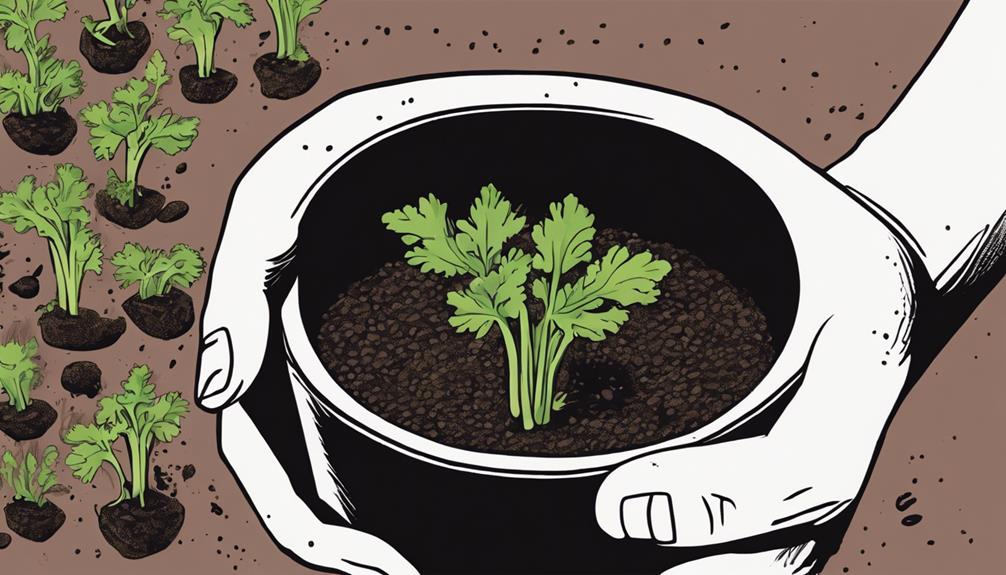Yes, it’s certainly possible to grow celery plants from seeds.
A proper understanding of factors such as proper storage, which can keep celery seeds viable for up to five years, is crucial.
If you have Elderberry in your garden you might want to add Possum Grape plants too. Because these plants are not the same and have some key differences. Check out the article we wrote to learn the key benefits and differences in Elderberry and Possum Grape plants.
Key Points
- Choose well-draining pots and sow seeds shallowly in quality potting mix.
- Maintain consistent moisture, sunlight, and soil temperature for successful celery growth.
- Harvest mature stalks before frost, and implement pest management techniques.
- Consider alternative methods like container gardening or hydroponics for celery cultivation.
Can you grow celery from celery seed spice?
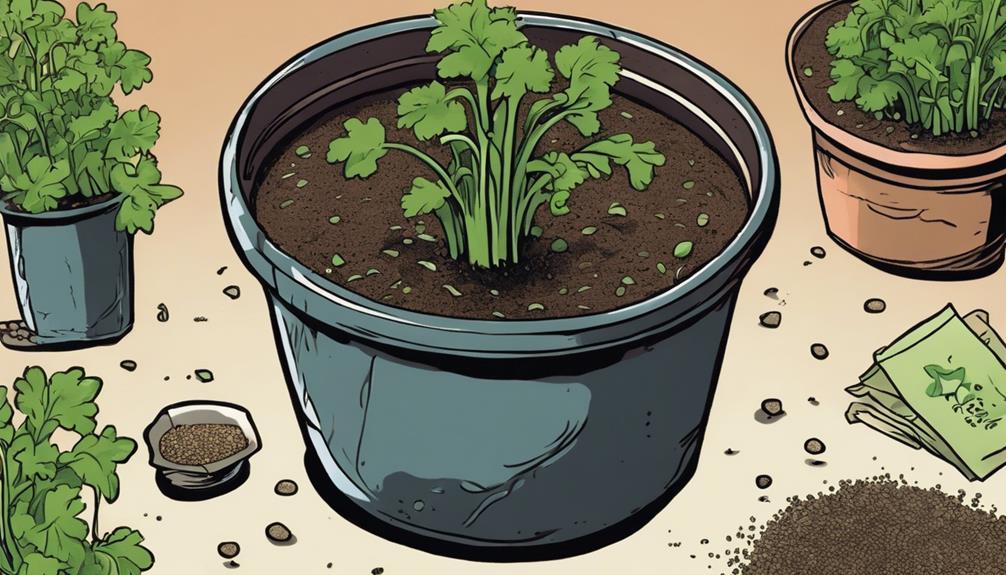
Certainly! You can successfully grow celery from celery seed spice as it contains viable celery seeds that are capable of germinating. For container gardening, choose a pot with good drainage.
Hydroponic systems work well for indoor cultivation, providing a controlled environment for best growth. When starting celery seeds, make sure they’re sown shallowly in a well-draining potting mix. Maintain consistent moisture levels to support germination.
Indoor cultivation allows you to monitor the growth conditions closely, making sure your celery seedlings thrive.
Seed starting techniques involve keeping the seeds warm and damp until they sprout. With these methods, you can effectively grow celery from celery seed spice, enjoying fresh produce right from your home.
Celery Seed Spice
If you have celery seed spice on hand, you can easily cultivate celery plants from the dried seeds contained within. Here’s what you need to know:
- Seed Viability: Celery seeds used as spice are often viable for planting, but check the expiration date for best germination rates.
- Plant Care: Sow the seeds in well-draining soil, keep them moist, and provide full sun. Transplant seedlings outdoors after the last frost.
- Harvesting Tips: Harvest celery stalks when they reach the desired size by cutting them at the base. You can also harvest seeds from mature plants for future use.
- Culinary Uses: Besides being used as a spice, celery seeds can also be used in pickling, salads, soups, and stews.
Celery Plants
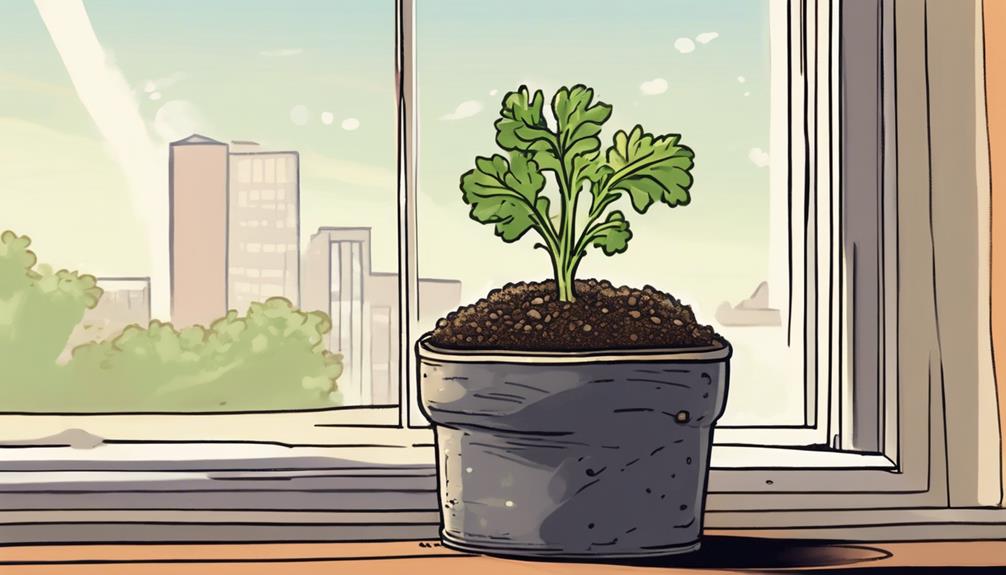
Celery plants, which are grown from celery seed, produce edible stalks and come in various varieties such as tall and self-blanching.
When it comes to growing celery plants, consider utilizing container gardening or hydroponic systems for efficient space usage. Companion plants and crop rotation are beneficial practices to promote best growth and deter pests naturally.
For those interested in sustainable gardening, organic methods can be applied to cultivate celery plants without synthetic chemicals.
Seeds
To successfully grow celery plants from seeds, make sure that the seeds receive the proper conditions for germination. When preparing to plant celery seeds, follow these steps:
- Seed Preparation and Planting: Soak the celery seeds in water for a few hours before planting to help kickstart the germination process.
- Indoor vs. Outdoor Growing: Decide whether to sow the seeds directly outdoors in well-prepared soil or start them indoors in seed trays or pots.
- Seed Soaking and Germination Process: After soaking, plant the seeds at the appropriate depth, keep the soil consistently moist, and make certain they receive sufficient light for successful growth.
Germination
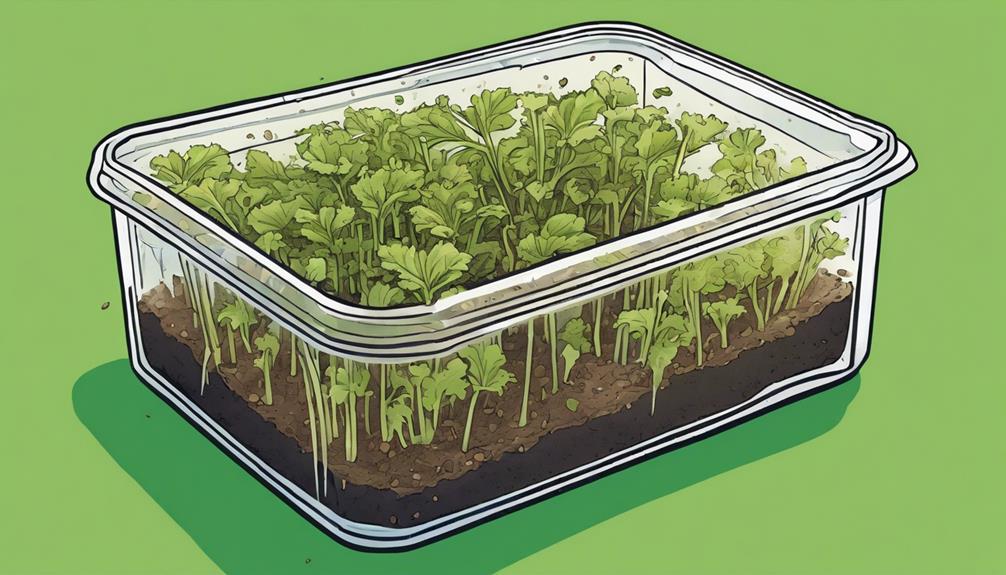
Germination of celery seeds is an important stage in the growth process, requiring consistent moisture and an ideal temperature range of 55-70°F. During this phase, seedling care is important.
Make sure a proper watering schedule to keep the soil moist but not waterlogged, maintaining adequate humidity levels to support germination.
As the seeds sprout, focus shifts to root growth and nutrient absorption. Once the seedlings have developed, they can be transplanted into larger containers or the garden.
Adequate light exposure is essential for photosynthesis, so place the seedlings in a sunny location.
Soil
When moving on to the soil aspect of growing celery plants from seeds, make sure that you select fertile soil with good drainage to support healthy plant development. Here are some key points to ponder:
- Soil Nutrients: Make certain the soil is rich in nutrients by incorporating compost or fertilizer to provide essential elements for plant growth.
- Water Retention: Maintain consistent moisture levels in the soil to support proper hydration for the celery plants.
- Root Development: Good soil drainage is essential for promoting strong root development, allowing the roots to establish themselves effectively for the best nutrient absorption and stability, which is crucial for overall plant growth.
Sunlight
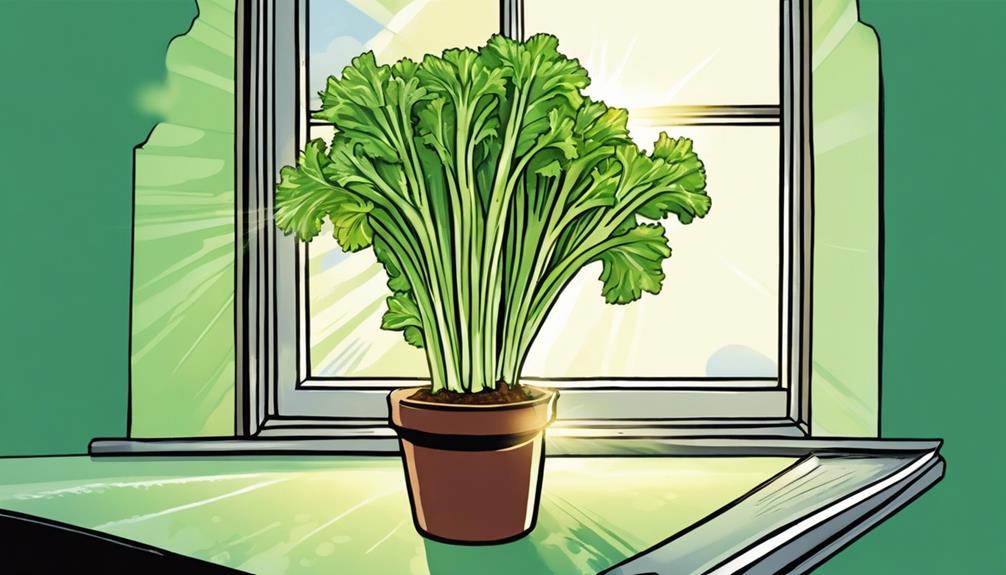
For best growth and development, make certain that your celery plants receive a minimum of 6 hours of direct sunlight daily. Sunlight duration is vital for the health of your celery plants.
Morning sun is preferable as it’s less intense than afternoon sun, providing a gentle and beneficial light for best growth.
Seedling growth depends heavily on sunlight, as it helps them establish strong roots and sturdy stems. Direct sunlight is essential for photosynthesis, the process by which plants produce energy.
Pay attention to sunlight exposure will greatly impact the success of your celery plants.
Water
Ensuring consistent moisture levels is essential for the successful growth of celery plants from seeds. To help you with this, consider the following:
- Watering Schedule and Moisture Levels:
- Develop a regular watering schedule to keep the soil consistently moist but not waterlogged.
- Root Development and Hydration Needs:
- Pay attention to the hydration needs of celery plants, especially during the germination stage, to support healthy root development.
- Leaf Wilting and Irrigation Techniques:
- Watch out for leaf wilting as a sign of underwatering and adjust your irrigation techniques accordingly.
Temperature

Maintain a temperature range between 55-70°F for prime growth of celery plants from seeds. Temperature fluctuations can affect seedling care; guarantee a stable environment to support germination and growth. Hot temperatures can impede the growth process, so climate control is crucial.
It’s important to monitor the temperature consistently and adjust as needed to keep it within the ideal range. Avoid extreme heat, as it can hinder the development of celery plants from seeds. A consistent watering schedule combined with appropriate temperature regulation will help create an ideal environment for the seeds to thrive.
Fertilizer
To nourish your growing celery plants from seeds effectively, begin by applying a balanced fertilizer when planting. This step is essential for providing essential nutrients that support healthy growth rates.
After a few weeks of sprouting, consider side dressing with fertilizer to guarantee continuous nourishment. Additionally, incorporating compost into your soil mix can also provide valuable nutrients, promoting ideal plant health.
When using fertilizer, be mindful of nutrient deficiencies that can impact plant growth and overall well-being. Opting for organic options not only promotes sustainable practices but also helps maintain soil composition, supporting robust root development in your celery plants.
Days to Maturity
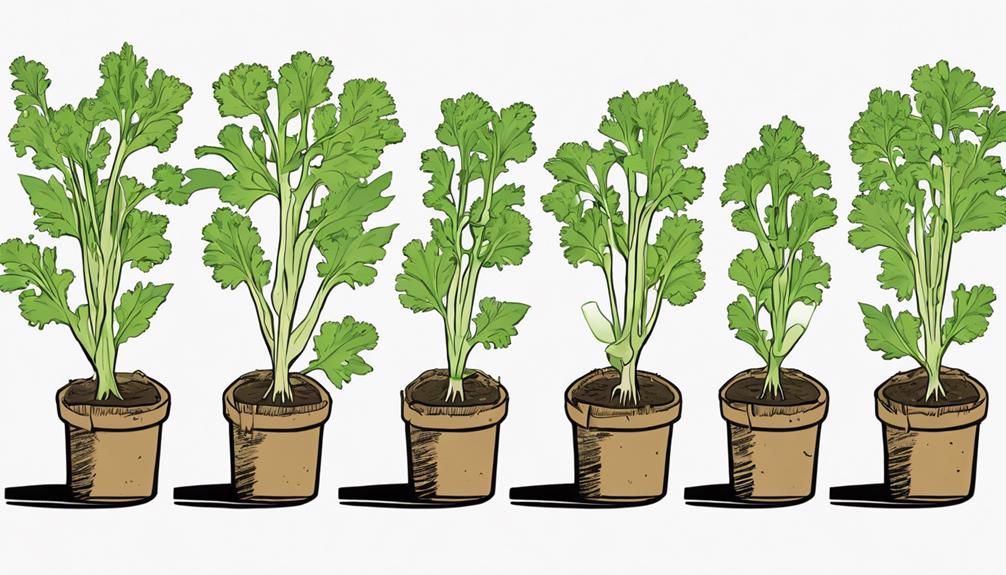
Achieve best results by planning for a maturity period of 100-120 days when growing celery plants from seeds. When considering planting techniques, guarantee a depth of 1/8 inch for seeds and maintain a soil temperature of 70-75°F for best germination.
Provide consistent moisture and light for successful growth. For ideal growing conditions, celery thrives in rich, well-draining soil with a pH of 6.0-6.8. Keep the plants well-watered, and provide ample sunlight or artificial light if growing indoors.
Harvesting tips include beginning to harvest outer stalks once they reach a desirable size, typically around 3 months after planting. Remember to harvest before the first frost to avoid damage. By following these guidelines, you can expect a rewarding celery harvest within the specified maturity timeline.
| Planting Techniques | Growing Conditions | Harvesting Tips |
|---|---|---|
| Depth of 1/8 inch | Rich, well-draining soil | Begin harvesting outer stalks |
| Soil temp of 70-75°F | pH of 6.0-6.8 | Harvest before first frost |
| Consistent moisture | Adequate watering and sunlight | – |
Pests
When growing celery plants from seeds, it’s important to be vigilant against common pests such as aphids, loopers, and slugs. Here’s how you can protect your celery from these pests:
- Pest prevention: Regularly inspect your plants for any signs of pest infestation, such as holes in leaves or clusters of insects.
- Natural remedies: Consider using natural predators like ladybugs to control aphids or handpicking loopers off your plants.
- Integrated management: Implement a variety of pest control methods such as rotating crops, maintaining healthy soil, and using physical barriers like row covers to deter pests.
Companion Planting
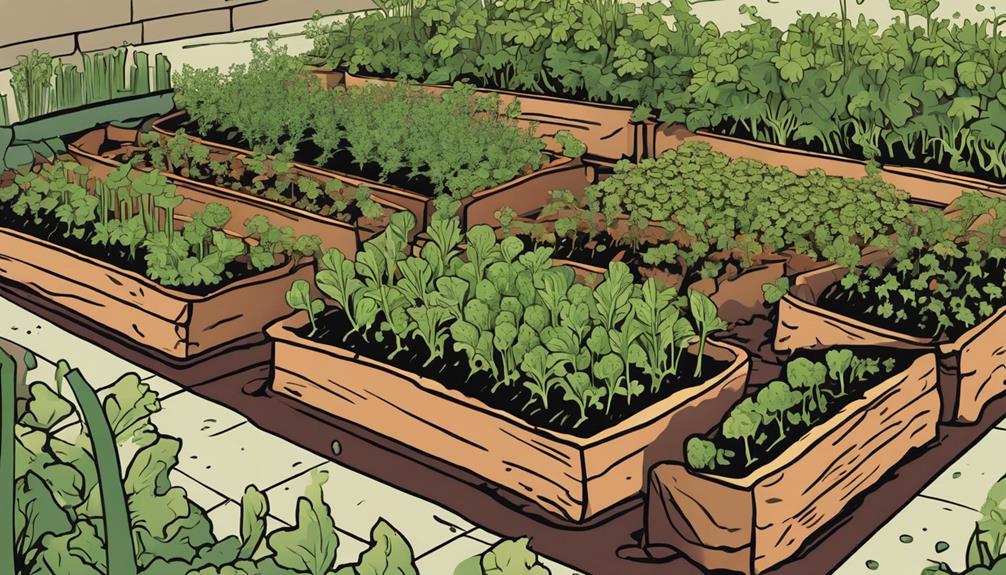
When practicing companion planting for celery, consider planting them alongside tomatoes, beans, and brassicas while avoiding placement near parsnip and carrot.
Assure proper soil preparation with well-draining, fertile soil and adequate spacing of around 12-18 inches between plants.
For pest control, attract beneficial insects like ladybugs and lacewings that prey on celery pests.
Implement succession planting and crop rotation by alternating celery with unrelated crops to prevent soil-borne diseases and nutrient depletion.
Mulch around celery plants to retain moisture and suppress weeds, aiding in consistent growth.
Maintain a regular watering schedule, providing around 1-1.5 inches of water per week to keep the soil evenly moist without waterlogging.
Harvesting
To harvest celery plants, cut the stalks at ground level when they reach maturity. Harvesting the outer stalks as needed promotes continuous growth. The flavor of celery intensifies after exposure to frost.
Once you’ve harvested your celery, consider these tips:
- Storage Tips and Best Practices: Store celery in the refrigerator wrapped in aluminum foil to maintain crispness for up to two weeks.
- Recipes Using Harvested Celery: Utilize freshly harvested celery in dishes like soups, salads, stir-fries, and juices for a burst of flavor and crunch.
- Preserving Celery Harvest: Freeze chopped celery for long-term use in cooked dishes or dehydrate it for a crunchy snack.
Homegrown celery offers benefits such as freshness, control over growing conditions, and the satisfaction of cultivating your own produce.
Storage
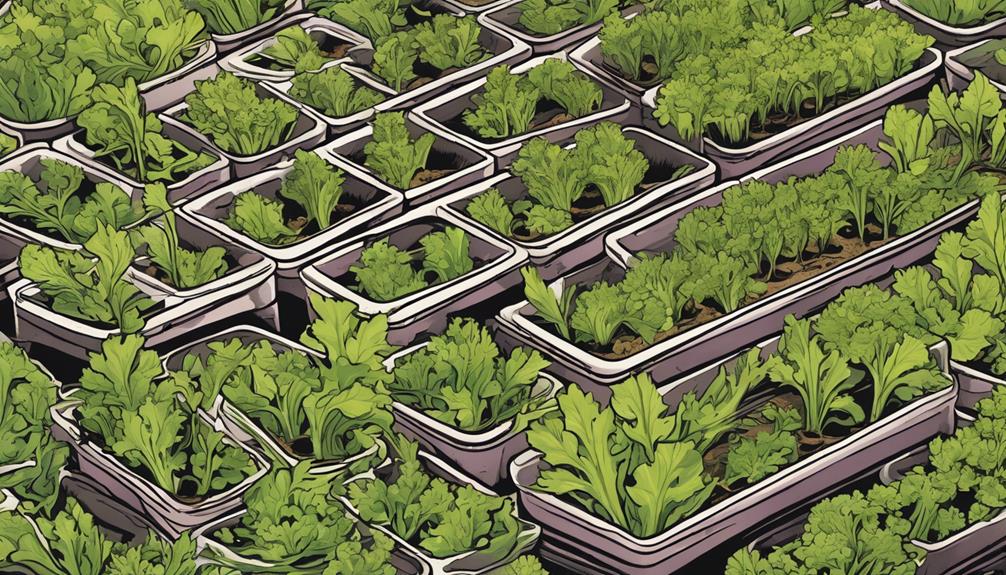
For best freshness and longevity, store freshly cut celery in the refrigerator wrapped in plastic. Proper humidity, air circulation, and avoiding essential gas exposure are vital for maintaining celery’s quality. Here are some storing techniques to help extend the shelf life of your celery:
| Proper Humidity | Air Circulation | Ethylene Gas |
|---|---|---|
| Keep celery in the crisper drawer | Leave some space around celery | Store celery away from ethylene-producing fruits |
| Aim for 95-100% humidity | Do not overcrowd the refrigerator | Check for ethylene-sensitive produce nearby |
| Use a damp towel to maintain moisture | Avoid sealing celery in airtight containers | Wrap celery in perforated plastic bags |
Frequently Asked Questions
Can You Use Store-Bought Celery Seeds to Grow Celery Plants?
Yes, you can use store-bought celery seeds to grow celery plants. Check seed viability by conducting a germination test. Care for seedlings with adequate light and moisture. Space plants 10-12 inches apart. Harvest by cutting stalks at the base.
How Long Does It Take for Celery Seeds to Germinate?
To make celery seeds sprout, maintain consistent moisture and warmth. It usually takes about 10 to 21 days for germination. Provide proper care for seedlings by watering lightly, providing adequate sunlight, and using a balanced fertilizer.
Is There a Specific Type of Soil That Is Best for Growing Celery Plants?
For best results when growing celery plants, choose well-draining soil rich in organic matter. Maintain a slightly acidic pH level around 6.0-6.5. Water consistently, ensuring adequate drainage. Consider fertilizing with a balanced option high in nitrogen. Mulching aids in moisture retention and weed control.
Do Celery Plants Require a Lot of Sunlight to Thrive?
To thrive, celery plants require adequate indoor lighting for seedlings. Maintain a consistent watering schedule for best plant growth. Supplement with proper nutrients to promote plant size and leaf development. Assure a temperature range conducive to healthy growth.
What Is the Best Way to Prevent Pests From Damaging Celery Plants During the Growing Process?
To prevent pests from damaging celery plants during the growing process, consider natural remedies like companion planting to deter pests. DIY insect traps can be used to protect plants, along with organic solutions for ongoing pest prevention.
